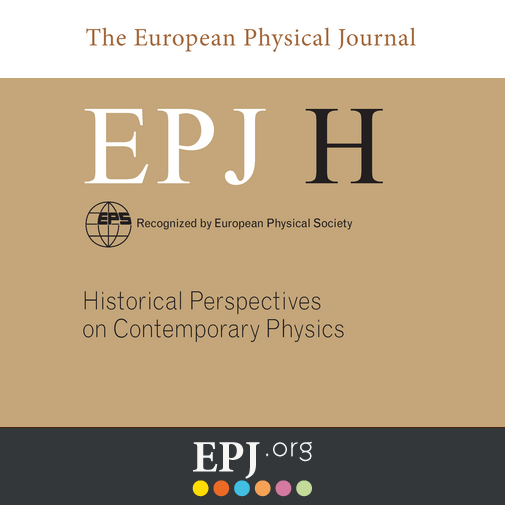EPJ H Special Issue - From history of physics to “history for physics”
- Details
- Published on 18 September 2024

The special issue “History for Physics: Contextualizing modern developments in the foundations of quantum theory” aims at demonstrating the importance of the history of physics within physics itself.
With their special issue “History for Physics: Contextualizing modern developments in the foundations of quantum theory” the guest editors aim to bridge contemporary topics in physics with their historical context and to draw attention to the history of physics as a subject of study and research for the active practitioner in physics but also hope to encourage historians of physics to engage with contemporary questions in physics, to possibly draw from this inspiration, or recognize need, for further historical research.
Central to carrying over the “history for physics” theme to the special issue format is the concept of tandem articles. Each tandem article consists of two parts: a part written by a historian of physics and a part written by a physicist. Both parts are supposed to treat one and the same aspect of a foundational issue involving quantum theory in a broad sense. In their respective parts, each author treats this aspect from their own respective perspective: The physicist contributes to the description of the state of the art of an open problem or debated phenomenon related to quantum physics, whereas the historian provides an appropriate historical account related to this actual case. The precise shaping and proportioning of the parts were left to the authors.
Each article of this special issue stands alone in terms of content and can thus be read independently. What they all have in common, however, is a focus on the foundations of quantum theory and their integration both of historical and contemporary components in various ways. In their individual efforts to interpret the tandem paper format, the authors of the special issue have sought insightful ways to combine historical work with the current state of the art. As a result, they have utilized these two components differently and thus have drawn distinct conclusions. Some authors find that as our current debates evolve, also our assessment of the work done in earlier times evolves, which is therefore never completed. Others observe that we are currently entering what appears to be a new phase of a specific research field. Still others suggest that integrating historical analysis with current knowledge opens up new avenues for exploring conceptual foundations.
All articles are now free to read until 17 November 2024. For further information and an overview on the individual tandem papers read the Editorial




